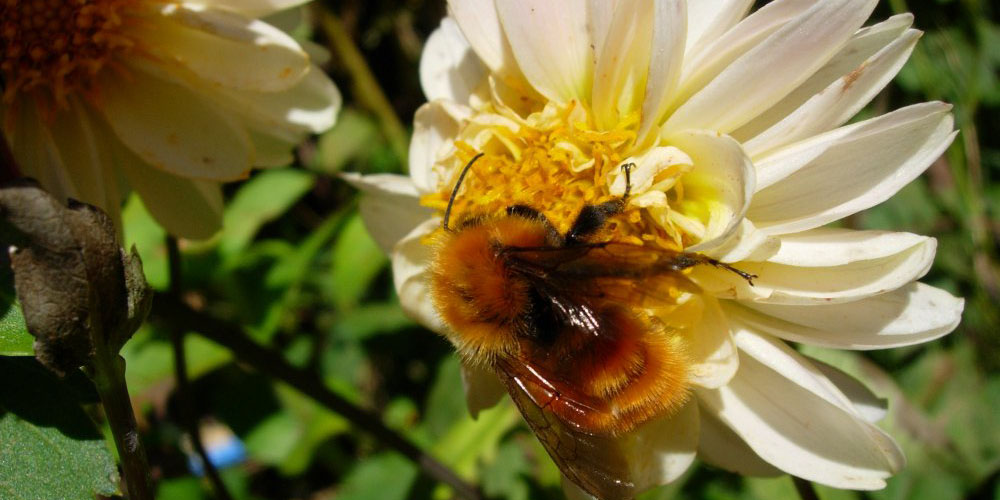Most beekeepers have colony losses in winter. This is something that happens even to the best beekeepers. Winter, after all, is the bottleneck for colony survival. However, there are some factors that you can control to keep colony losses as low as possible. First of all, you have to know about the causes for colonies dying during the cold months. And yes, I’m sorry to say this, varroa is still the main reason for this.
Many beekeepers say that varroa is there for so long now, that there must be another reason. It must be pesticides that kill the bees. Or cell phone waves. Or any other explanation that shifts the responsibility from the beekeepers to somebody else. Some have a grain of truth, others are complete nonsense. Unfortunately, conspiracy theories exist in beekeeping as much as in any other area. And again: knowledge helps to identify what’s good or bad information.
Winter losses and their causes
So yes, varroa is still the main reason for colony losses in winter. Which doesn’t mean that there aren’t other reasons. “Main” doesn’t mean “the only”. This is a common misunderstanding in my opinion. Obviously, there are effects from pesticides, from other diseases, from starvation. And life itself. Living beings die, that’s another uncomfortable truth. The “physiological” rate are up to 15% of dead colonies during the winter. I would say, usually around 10%. That would be “normal”.
If a beekeeper loses more than that, however, chances are something went wrong with the varroa treatment. Also this happens to the best. One of the beekeepers working for one of the bee institutes I worked for, used to treat his neighbour’s colonies when he did his own colonies. He said that he had high losses due to reinvasion before and his neighbour didn’t treat. So, it was less costly for him to treat some foreign colonies than to watch his colonies die.
Small explanation of the term “reinvasion”
Reinvasion means that a treated colony gets infested again after treatment. Usually, it’s because the strong, treated colonies rob out weaker, untreated colonies. This is a normal behaviour for honey bees, but favours the distribution of diseases and parasites. Especially in “overcrowded” areas, those with many beekeepers, this is a risk. It happens mainly in late summer, when flowers begin to disappear, but colonies are still active. The honey stores from a weak colony are an easy resource for a strong colony.
So, as I said, even someone who did everything right can have colony losses because of varroa. No shaming or guilt there. On a side note: that’s also one more reason for compliance to recommendations on treatments.
Know your enemy to avoid colony losses in winter
There’s good news though: You can do something. In my humble opinion it’s better to search for things that I can control than to complain about others. Taking responsibility isn’t always easy. But you have the control to do what you can. And if it doesn’t work out, analyse what didn’t work out and do it better next time. But how improve? Well, knowing your enemy. This is true for every disease, but let’s stay with varroa for now.
Despite this mite being in Europe for more than 40 years now, many beekeepers still don’t know much about their biology. This is still one of my most requested talks. Knowing about how varroa mites live is much more than an academic interest or mere theory. It has a strong relation to the practice: This gives you the understanding when and how to treat. Don’t believe me? Ok, let me explain.
Life cycle of varroa mites…
Varroa mites are highly specialized on honey bees. What you see on the workers are the so-called “phoretic mites”*. In this phase, it’s only adult females and they feed on the fat body of the workers. The fat body is an extremely important organ for bees: here they store nutrients (mainly glycogen, i.e. sugar, but also proteins and fat) for winter time. It also plays a role in the immune system of honey bees. So, a parasite feeding on this organ isn’t good news. This influences the ability of these workers to survive the winter.
But there’s more: In this phase, varroa mites feed on the bees, but they don’t reproduce. This essential part of their lifecycle happens in the capped brood. This is also why they prefer nurse bees in between reproductive cycles: They carry them directly to the right spot, the brood. Female varroa mites enter the brood cell shortly before capping. They hide in the remains of larval food until the larva eats it all up and then climbs up to feed on it.
One mother – up to three daughters
About 60 hours after the “mother mite” entered the brood cell, it lays its first egg. It recognizes the “right” moment by chemicals the larva emits (had to bring this in, this is a core part of what I studied during my PhD…). The first egg develops into a male, while all the following become females. If you wonder: male eggs aren’t fertilized, while females are. Just like in honey bees, too.
Mother varroa mite then continues to lay an egg every 30 hours. The son and daughters hatch and develop into adults. The whole family feeds on the larva, all on the same spot. The male then mates with his sisters. When the bee in the cell is fully developed, mother varroa and her adult, mated daughters hatch with it. Usually, it’s two to three daughters. The male and the younger females stay in the brood cell and die. Then the whole cycle begins again, several times for every female.
…and how it relates to treatments
OK, you may say, but how does this immoral stuff relate to my beekeeping practice? It does. First, it’s the explanation why the infestation in the colony doubles every month. Every mite that reproduces successfully becomes 3-4 mites in the next generation. This exponential growth makes varroa dangerous for honey bee colonies. They become more and more and still grow their population when the honey bee colonies decline in late summer. In this period, to avoid that there are more mites than bees in your colonies, you have to treat.
Summer treatments
But it’s not only the number of mites that has to remain “tolerable”. As you learned above, in the phoretic phase the mites feed on the fat body of the worker bees. You also learned that this organ is essential for bees in winter. So, it’s important that this organ stays whole and healthy, isn’t it? The moment for the late summer treatment, therefore, is when the colonies begin to decline before winter. This is when the colonies begin to “produce” winter bees. And they must be healthy, unburdened by hungry parasites.
This means that winter bees have to grow up in brood cells without varroa mites, if possible. Adult workers that developed in presence of a varroa family have a lower hatching weight and a lower lifespan. Both not good for winter bees who should live longer than their sisters in summer. Though it’s still not fully studied, it’s reasonable to think that the mites damage the fat body of the larvae, too. Larval fat bodies are larger than those of adults. And presumably yummier to varroa mites. So, the summer treatment makes sure that your colonies survive the winter.
Winter treatments
In winter, the treatments have an additional aim. Now, you have to think of the next season. Hopefully, there is a period without brood. Then you can knock down as many mites as possible. This is easier in times with no brood, because the parasite can’t “hide” in the brood cell. With formic acid as an exception, most substances we have for varroa treatment only kill the mites on the adult bees. Therefore, times without brood are the moment for winter treatments. By this, you make sure that your colonies start with the lowest possible infestation.
Why not with no mites at all you may ask? Well, because no treatment, no medicine is 100% efficient. Actually, if a product says that, don’t buy it. It’s a safe sign for scam. But if you think of the following season and the exponential growth I talked about before, you see why it’s important to start into the season with the lowest number possible. If you start with 50 mites in February, you end up with 12,800 mites in October. Which is often more than bees in that time of the year. But fortunately, you reduced that number with the summer treatment, didn’t you?
Theory and practice work together
So, if you know all that, you know what you have to do to avoid colony losses in winter, don’t you? At least those due to varroa? All the recommendations from science on how, when and why to treat are based on the biological foundation. It’s not something somebody just thought would be reasonable. All these facts come from year-long research, many experiments, and data analysis. It then results in a simple-sounding recommendation. So, beekeeping practice profits from science.
On the other hand, science also profits from beekeepers: Very often observations and issues reported from practice initiate new research projects. Which then again result in applications for beekeeping. This is why I never get tired to say that theory and practice work together. They aren’t opposed to each other, but two sides of the same coin. A reason for this blog, the talks, and courses I do. This is why everyone, scientists and beekeepers alike, should always continue to learn and ask questions.
Talking about learning: If you want to know more about the foundations to keep honey bee colonies healthy, not only about varroa treatments, check out the Bee Health Compendium. And for regular updates on bee health: subscribe to the Bee Health Letters. You can do so by scrolling down to “Keep current with BeeSafe” and fill out the form.



